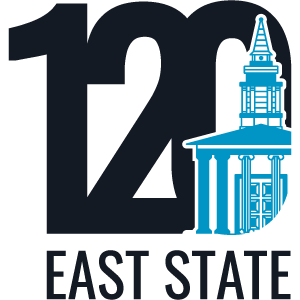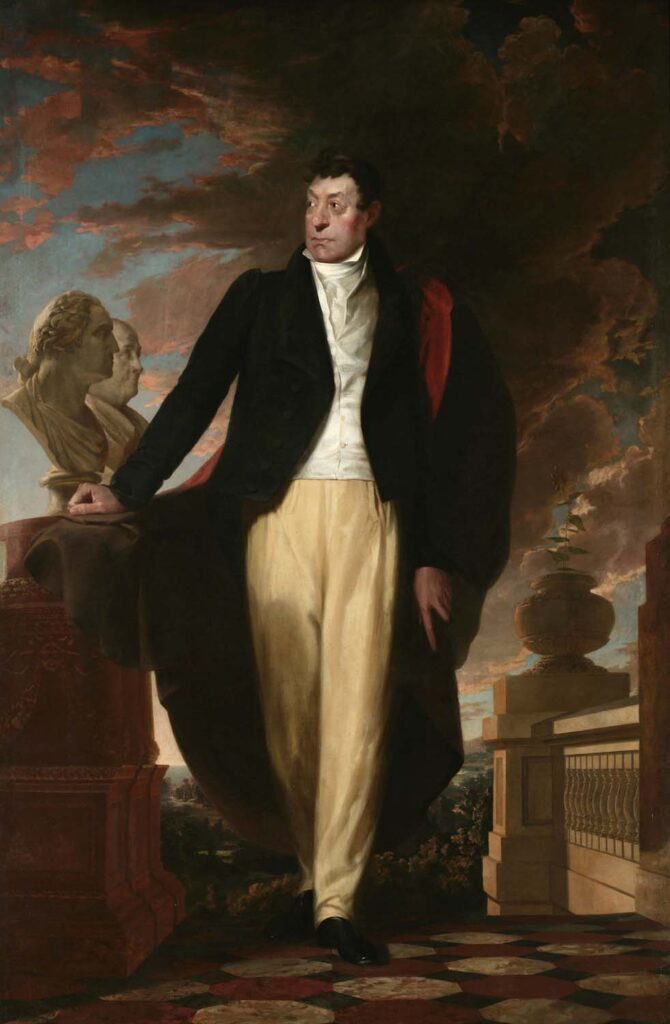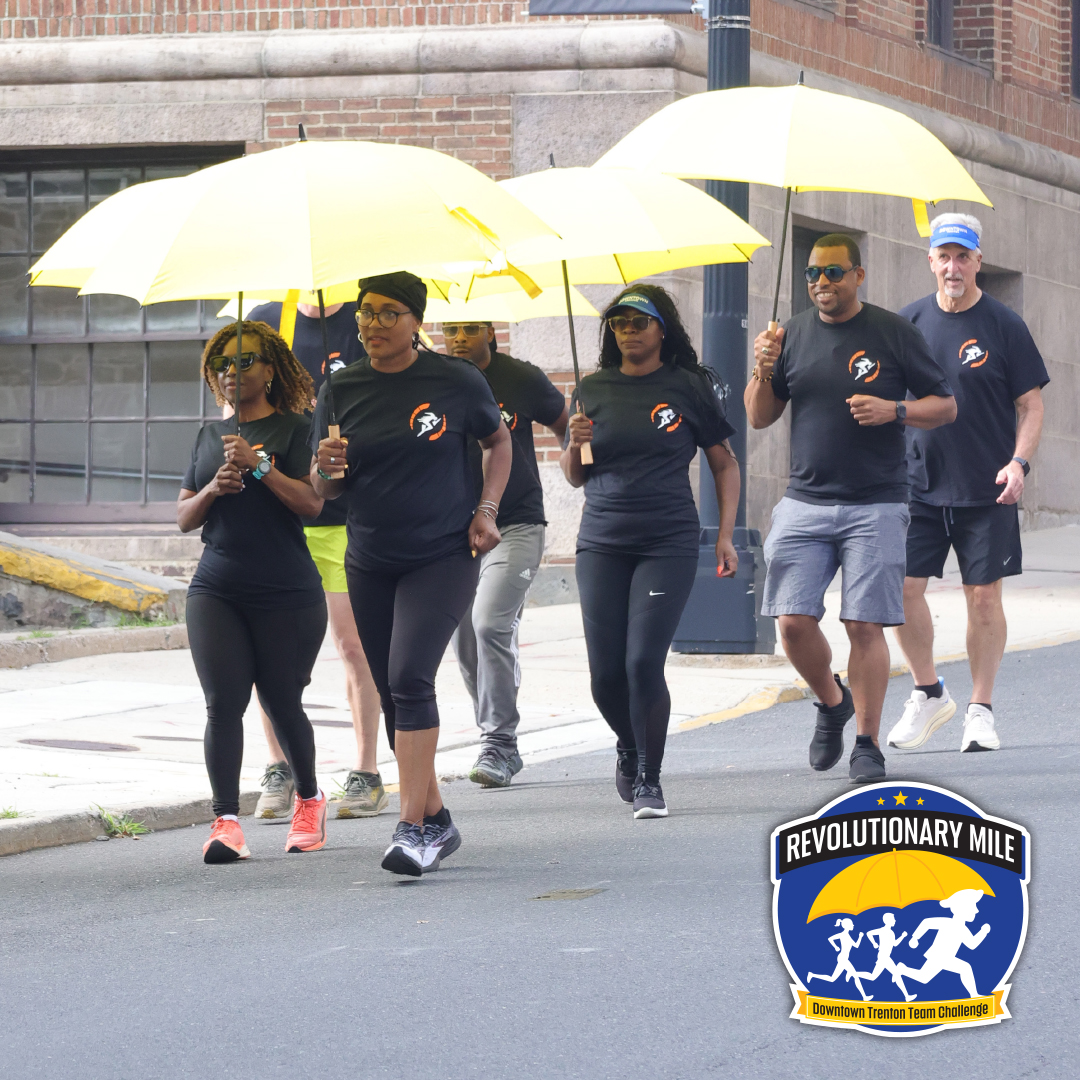By: Ben Moyer
On September 26, 1824, Gilbert du Motier, better known to history as the Marquis de Lafayette, worshiped at First Presbyterian Church of Trenton as part of his tour of the United States, 50 years after he had fought in the American Revolution as a general in the Continental Army. He arrived the night before from New Brunswick, after a stop in Princeton. No mention of Lafayette’s visit has been found in church archives, but his visit is noted in the accounts of A. Levasseur, Lafayette’s secretary during his journey.
Sadly the preacher’s name and the text he preached on is lost to the mists of history. Levasseur wrote that after church, Lafayette visited Joseph Bonaparte, the older brother of Napoleon Bonaparte, at his Point Breeze estate in Bordentown, where he dined with Joseph, his daughter, Zenaide, and her husband, Charles Lucien, a nephew of Joseph and his younger
brother, Napoleon.
Lafayette’s entourage including the New Jersey’s Gov. Isaac Halstead Williamson and their secretaries returned to Trenton late that evening.
Joseph Bonaparte’s son, Andrew Kinsey Rowan, deeded a relatively large tract of land in 1885 to First Presbyterian and two other Trenton churches, Central Methodist Episcopal (now Turning Point Methodist) and First Baptist.
The land deeded to the three churches was on what was then known as The Island in Morrisville, PA. The three churches leased this land for 99 years to Morrisville Borough in 1939 after a levee had been built blocking the channel and reconnecting the Island to Morrisville proper. This land is now part of Williamson Park.
A Hotbed of Resistance
First Presbyterian was a hotbed of resistance during the Revolution and its role in the Revolution helps to explain Lafayette’s visit to the church.
Its pastor, Reverend Elihu Spencer, was an outspoken supporter of the Patriot cause and the Congress recruited him in 1775 to report on the Revolution to settlers in Western Virginia and the Carolinas.
Like many Presbyterian preachers, Spencer paid a price for his advocacy for independence. The British put a bounty on his head – a common experience for Presbyterian preachers during the war – and when the Hessians occupied Trenton in December 1776, they burned down his house.
During the Second Battle of Trenton, On January 2, 1777, the Hessians killed another Presbyterian pastor, John Rosbrugh.
When asked by his captors to identify his denomination, Rosbrugh replied, “Presbyterian,” and the Hessians immediately bayoneted him to death. He is buried in First Presbyterian’s graveyard, along with at least 16 Revolutionary War veterans that include a general who later served in Congress, and a colonel.
In 1933, the General David Foreman Chapter of the DAR presented First Presbyterian with a plaque memorializing its veterans.
These were not the only revolutionaries who called First Presbyterian their spiritual home. Samuel Tucker, President and Treasurer of the Provincial Congress of New Jersey during the Revolutionary War, was one of the church’s leaders.
Rev. James Francis Armstrong, who later pastored at First Presbyterian, fought in the Continental Army as a private soldier in New York before he was ordained to the ministry. Armstrong became a chaplain in the Second Maryland Brigade and preached to Washington’s troops at Middlebrook, New Jersey in 1779. He graduated from Princeton University and boarded at the house of Princeton’s Rev. John Witherspoon, a signer of the Declaration of Independence. Dr. Nicholas de Belleville, a member of the First Presbyterian, was Count Cassis Pulaski’s physician, who was commissioned as a surgeon in the Continental Army, and later was Joseph Bonaparte’s doctor, as well. He served with Pulaski, the legendary Revolutionary War cavalry leader and colleague of Lafayette’s, at Valley Forge and in Trenton, then a Continental cavalry
base. De Belleville is buried in First Presbyterian’s graveyard.
Shared Connections – Several Degrees of Separation
Lafayette and Pulaski are both honored with a monument dedicated to them at the Birmingham Meeting House in Brandywine, Pennsylvania, and Lafayette is said to have laid the cornerstone for a memorial in Savannah, Georgia, at Pulaski’s grave in 1824, later in the tour that brought him to worship at First Presbyterian.
Lafayette also fought alongside of future U.S. President James Monroe, who was wounded at the battle of Trenton at the age of 19. He returned to Trenton and visited First Presbyterian in 1817, during his presidency. Monroe’s visit was part of a grand tour similar in concept to Lafayette’s 1824 American tour.
Before being elected president, Monroe served as the U.S. ambassador to France, from 1794-1796. Lafayette and his entire family, except for his son, George Washington Lafayette, were being held prisoner by the Austrians in Olmutz and in 1795, Monroe helped obtain the release of Lafayette’s wife, daughters, Thomas Paine, and several American citizens, and issued a U.S. passport to Lafayette’s son permitting him to come to the U.S.
Given that Lafayette’s 1824 visit was at the invitation of Monroe it is plausible that Monroe or one off his staff suggested Lafayette visit First Presbyterian.
In 1823, one year before Lafayette’s visit, Monroe appointed First Presbyterian member Samuel L. Southard as Secretary of the Navy. Southard served twice in the Senate and once as Governor of NJ. Monroe and Southard have streets in Trenton named after them.



